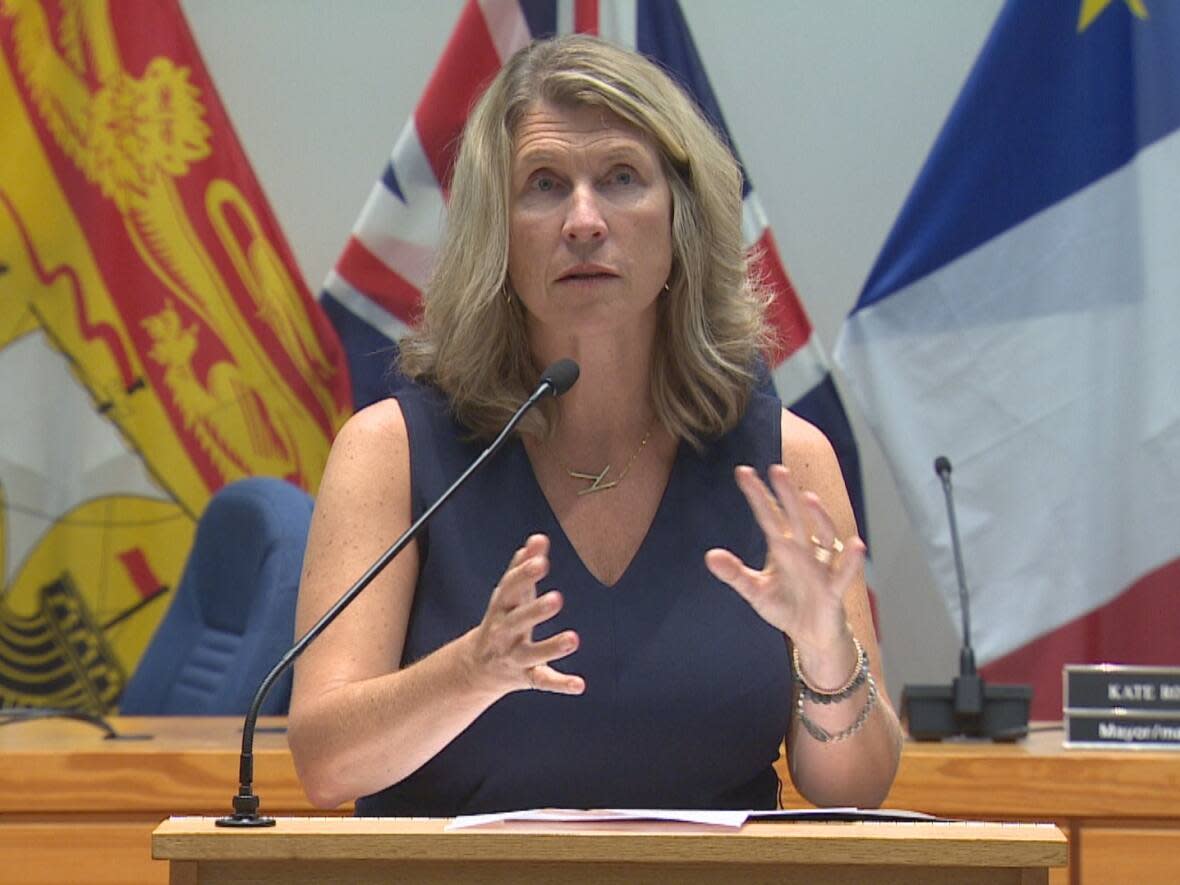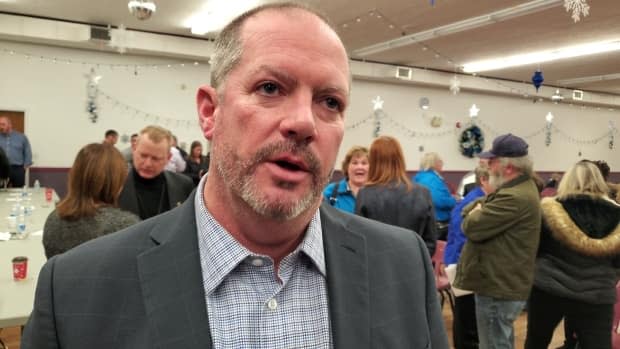Fredericton asks commission to create two new provincial ridings within city limits

Fredericton city council wants to see the provincial ridings map redrawn in and around the city's boundary.
In a letter to the recently formed Electoral Boundaries and Representation Commission, Mayor Kate Rogers asks for two new ridings exclusively within city limits, and to do away with "hybrid" ridings, which encompass constituents living in Fredericton as well as in smaller surrounding communities.
"It is Council's view that the present riding configuration marginalizes the voice of a significant portion of Fredericton's population," says Rogers, noting that about half of the city's population is encompassed in five ridings that also include rural communities.
Those five include Oromocto-Lincoln-Fredericton, Fredericton-Grand Lake, New Maryland-Sunbury, Fredericton-York and Fredericton West-Hanwell.
"Placing a small number of Fredericton voters in five different rural ridings where they share little in common with those who live in the balance of each of those ridings is inconsistent with the spirit of the [Electoral Boundaries and Representation] Act.
"By way of example and with respect, it is difficult to imagine how those who live in townhouses and condominiums in an urban setting west of Brookside Drive in the [city of Fredericton] share common concerns and interests with rural dwellers in Napadogan."

The other half of the city's population falls within the ridings of Fredericton South and Fredericton North.
The proposal has Fredericton South remaining largely unchanged, with areas of the city to the west, south and east of it brought together to form the new "Downtown-Hill-Skyline" riding.
Meanwhile, the area encompassing Fredericton North would become the riding of "Nashwaaksis-Devon," while areas further away from the city's core become Fredericton North.
The proposal also calls for fusing the Fredericton-York and Fredericton-Grand Lake ridings into one "Stanley-Minto-Chipman" riding, and redrawing Fredericton West-Hanwell, New Maryland-Sunbury and Oromocto-Lincoln-Fredericton into two ridings of "Hanwell-New Maryland" and "Oromocto-Fredericton Junction."

CBC News asked for an interview with Rogers, and spokesperson Wayne Knorr said Deputy Mayor Greg Ericson would be made available for comment, but not until after he makes a presentation to the commission on Thursday.
The Electoral Boundaries and Representation Commission was formed earlier this year and is being co-led by former Bathurst mayor and Progressive Conservative MP Roger Clinch, and former Liberal premier Camille Thériault.
They, along with four other commissioners, will redraw the boundaries of New Brunswick's 49 provincial electoral ridings, which is required by law to be done every 10 years to account for shifting population figures.
Moncton Mayor Dawn Arnold, in a public video posted online, said she presented to the commission to ask that all five of the ridings covering the city be redrawn to fall exclusively within city limits. Only two currently do.
City could lose advocates in legislature: MLA
Rogers in her letter notes that in four of the five ridings highlighted, Fredericton residents make up a minority of the total constituents, which worsens the concerns of poor representation for city residents.
The riding of New Maryland-Sunbury has the lowest percentage of Fredericton constituents, at 8.28 per cent of the riding's electorate, according to Rogers's letter.
Jeff Carr, the MLA for that riding, disagrees with Rogers's assertion that his constituents who live in Fredericton are poorly represented.

"I totally disagree with that completely," Carr said, in an interview.
"A member of the legislature has different responsibilities or different duties when it comes to constituents who live in a municipality or outside in an unincorporated area. To say they're misrepresented or underrepresented is just not a fact."
Carr said having several electoral ridings that encompass a portion of Fredericton is actually a good thing for the city, as it increases the number of MLAs who would advocate for provincial spending for their constituents.
"I would think that everybody should have a little piece of the city. You have more voices around the table as a region and you can advocate with a stronger voice provincially when you have more regional MLAs that touch your city limits."
Green Party Leader and Fredericton South MLA David Coon declined to weigh in on what he thinks of the proposal laid out by Rogers, but agreed that riding boundaries should capture constituents who have common interests.
"I think in general that the electoral boundaries as much as possible need to reflect a community of interest wherever in the province and not create artificial lines between communities dividing them," he said.
"And so that's, that's certainly the concern I've heard from people around New Brunswick... It's clear that boundaries currently in some places are in unnatural locations, dividing communities up rather than bringing them together."
Commission considering input from cities
Commission co-chair Roger Clinch said Fredericton's submission is just one of several that have been made by municipalities, including Saint John and Moncton.
"So all we're doing at this point is gathering all of those submissions and seeing how they would fit into an overall plan," Clinch said, adding it would be premature to weigh in on any of the submissions.
"The overriding factor here is that the quotient is 11,714 electors per riding, so when you affect one riding it could then have some impact on two or three others, so those are the things that we have to take into consideration before we could make a decision on that."
Rogers, in her letter, says the four proposed city ridings along with the three proposed neighbouring ridings, would have about 11,477 eligible voters each, which would meet the electoral quotient "almost exactly."
However, Clinch said it's not clear the same could be said of the other bordering ridings that will have to be altered to accommodate the changes.
"New Brunswick is a very rural province and not often or not always can you have an equal number of electors if you do it the way that is being proposed."
Clinch said the commission will consider the submissions from public stakeholders in the coming weeks, and present a draft of the redrawn ridings on Dec. 12.
Another round of public feedback will be held after that, and a final version of the new provincial riding map will be presented by next April, he said.


